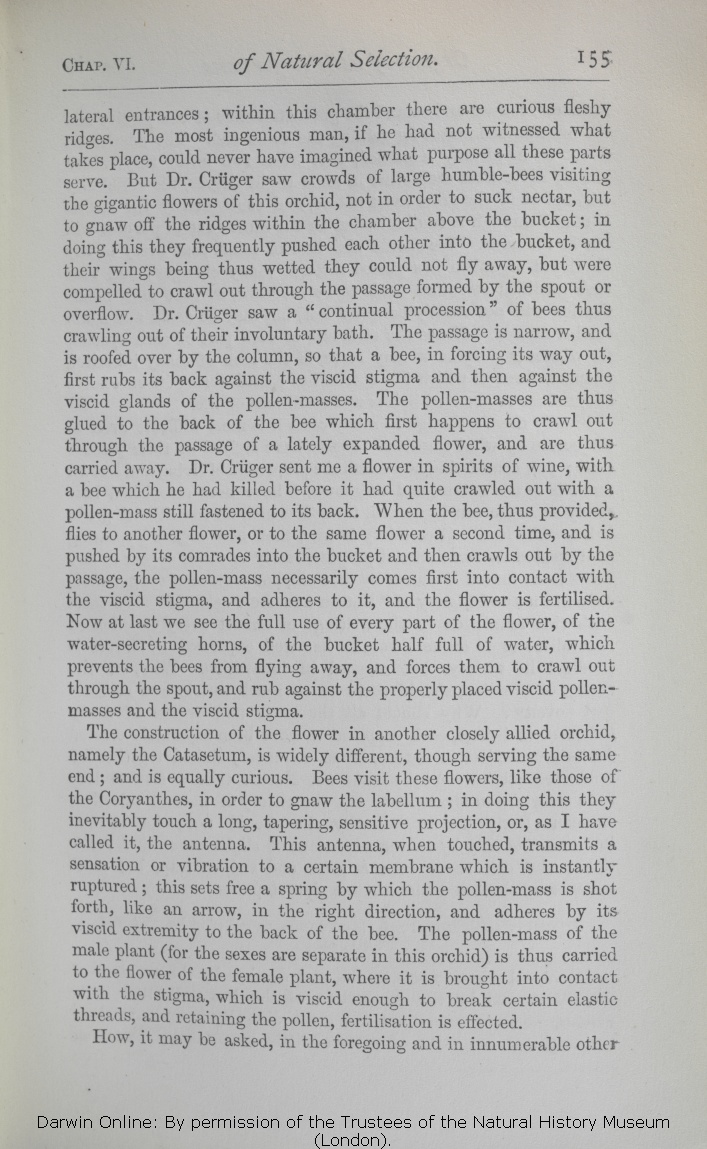The most ingenious man, if he had not witnessed what takes place, could never have imagined what purpose all these parts
serve. | serve. 1869 1872 | | served. 1866 |
| orchid, 1869 1872 | | orchid 1866 |
| not in order 1869 1872 |
| in the early morning, and they came, not 1866 |
| within 1869 1872 | | above 1866 |
| chamber above the bucket; 1869 1872 |
| bucket; 1866 |
| being thus wetted 1869 1872 |
| were wetted, so that 1866 |
| were compelled 1872 | | had 1866 1869 |
| saw 1869 1872 | | has seen 1866 |
| out through 1869 1872 | | through 1866 |
| OMIT 1869 1872 |
| of the passage 1866 |
| still fastened 1869 1872 | | fastened 1866 |
| every part 1869 1872 |
| the water-secreting horns, 1866 |
| flower, 1869 1872 |
| bucket with its spout, and 1866 |
| water-secreting horns, 1869 1872 |
| shape of every part 1866 |
|
bucket half full of water, which prevents the bees from flying away, and forces them to crawl out through the spout, and rub against the properly placed viscid pollen-masses and the viscid stigma.
1872 |
| flower! 1866 |
|
bucket half full of water, which prevents the bees from flying away and forces them to crawl out through the spout, and rub against the properly placed viscid pollen-masses and viscid stigma.
1869 |
| the Catasetum, 1869 1872 | | Catasetum, 1866 |
| flowers, 1869 1872 | | flower, 1866 |
| like those 1869 1872 |
| as in the case 1866 |
| the antenna. 1869 1872 | | antenna. 1866 |
| antenna, 1869 1872 | | antenna 1866 |
| touched, 1869 1872 | | touched 1866 |
| transmits 1869 1872 | | causes 1866 |
| sensation or vibration to a certain membrane which is instantly ruptured; 1869 1872 |
| certain membrane to rupture through its own irritability, and 1866 |
| of the male plant (for the sexes are separate in this orchid) is 1872 |
| is 1866 |
| of a male plant is 1869 |
| the 1869 1872 | | another 1866 |
| flower 1869 1872 | | flower, 1866 |
| of the female plant, where 1872 |
| where 1866 |
| of a female plant, where 1869 |
| retaining the pollen, fertilisation is effected. 1869 1872 |
| to retain the pollen-mass, which then performs its office of fertilisation. 1866 |
|









